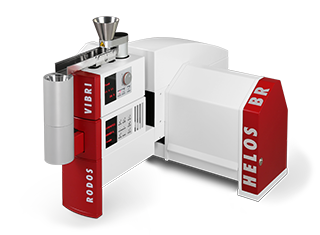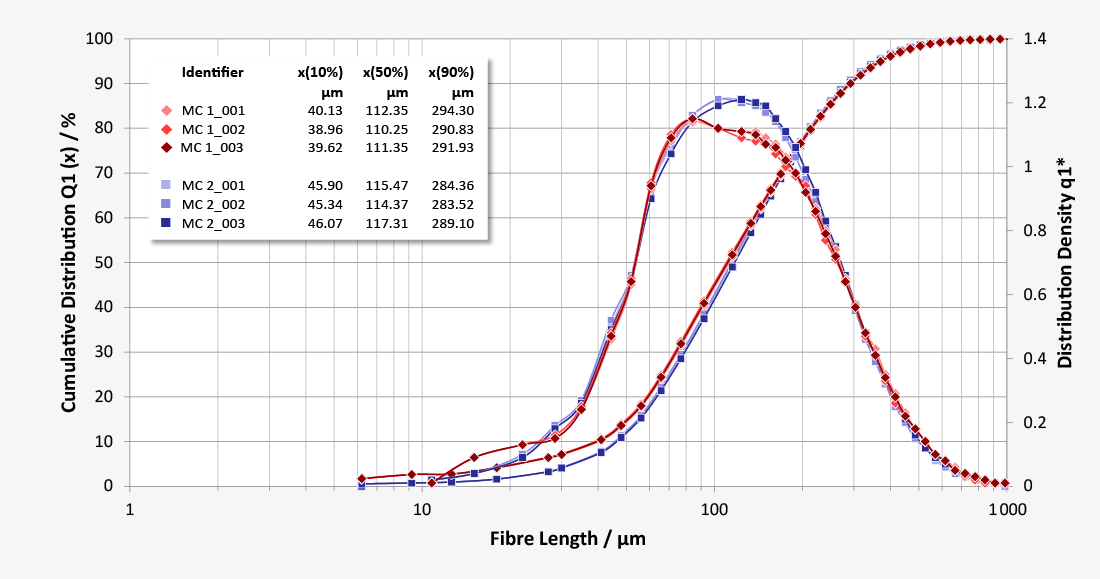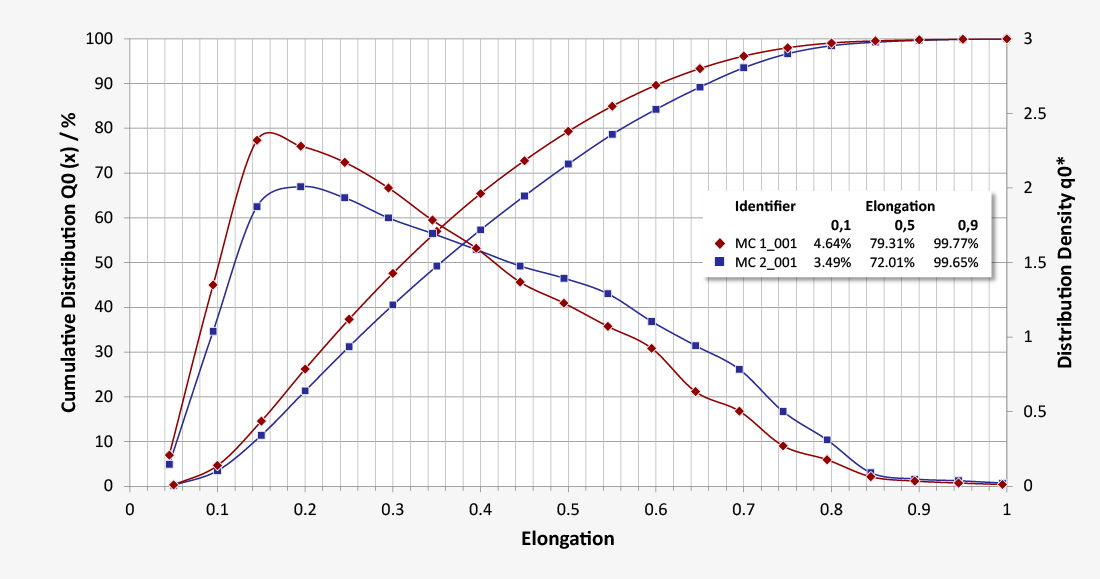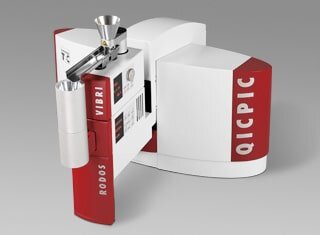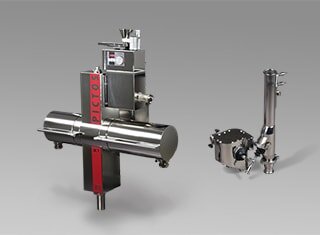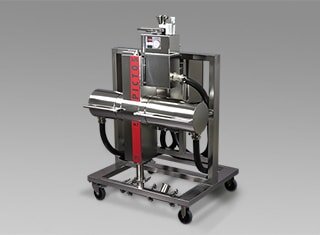Characterization of particle size and particle shape of methyl cellulose for production control by image analysis
Excipients in the pharmaceutical production are essential in most dosage forms such as powders, granules, inhalants, (film) tablets, dragées, ointments, creams, gels or liquids. They enable or improve the production of simple and safe-to-use dosage forms, control the active ingredient release and bioavailability and ensure sufficient durability. In terms of the evidence of quality, efficacy and safety, they have equal status with the active ingredients according to the requirements of the regulatory authorities. Both particle size and particle shape and are often decisive to the quality.
Methyl cellulose is a polysaccharide and cellulose derivative. It is present as a hydrophilic white powder with a fibrous structure, is soluble in cold water and easily digestible. Functionally, it controls the active ingredient release as a film former by embedding active ingredients or cores as a film tablet. It serves as a dry binder in the tableting process to improve compressibility, as a water-soluble binder or as a thickening and gelling agent in wet granulation. The length and thickness of the fibres determine the functionality of the methyl cellulose.
A pharmaceutical instrument design with quick and easy-to-clean measuring sections, outstanding availability and long service life ensure the high utilisation and recoverability of systems. Our highly skilled service staff assist in the preventive system maintenance, re-certification and qualification. Manufacturers of pharmaceutical excipients and innovative development laboratories also rely on our expertise as a global pharmaceutical manufacturer or specialist for sophisticated formulations.
- Quick and reproducible measurement of particle size and particle shape
- Good comparability of results at different locations
- Reliable and complete dry dispersion
- Easy handling and cleaning of the measuring system
- No sample carryover
- Process-oriented control
- Display of suitable shape parameters for quality assessment
Better particles with best instruments
Sympatec’s image analysis systems ensure a reliably precise and quick control of both the particle size distribution and the shape and fibre characteristics of all powdered excipients. They are used in the development of pharmaceutical forms in the laboratory and in quality control in volume production directly in the process. The RODOS dry dispersion also ensures a reproducible dispersion of larger sample quantities for statistically reliable measurement results. Our stable dry measuring method provides the best repeatability of individual measurements and an unmatched comparability of measurement results from system to system – even at remote production sites. Measurement methods developed for various product qualities can be transferred to other systems as a standard operating procedure (SOP). Consistently high product qualities and batch uniformities can be controlled correspondingly precisely and justify the confidence in the premium quality of the products.
Download application note for detailed information
Are you interested in additional content? Please register an account. After confirming the registration link brochures, application notes and other documents on particle measurement will be available for download.
Application strengths
- Complete and reproducible dispersion of the fibres in compressed air
- Quick measurement, high sample throughput and easy cleaning
- Frequency of 500 frames/s for high statistical reliability by collecting more than 1 million particles within 1 minute
- Statistically significant collection of both fine particles and fibrous constituents
- Measuring range dynamic of less than 10 microns to several millimetres
- Effective evaluation modes for the particle size
- Variety of display options | Diagrams for distribution of size and shape, particle gallery, particle video
- Variety of user-specific selection and filter criteria for identifying certain fractions by size and shape
Customer benefits
- Efficient replacement for screening | Better comparability between different plants | Variety of size and shape parameters for evaluation
- Equivalent diameter EQPC | Allows conclusions regarding viscosity and crystallinity | Usable as a control variable for grinding and other process stages
- Length of the fibre LEFI | Indicator of possible screening blockages
- Shape parameter sphericity and elongation | Indications of flow properties | Indicators of possible gelation
Application strengths
- Automatic and representative sampling from the process line
- Powerful and complete dispersion by using RODOS technology
- Applicability of the QICPIC performance characteristics in the process environment | Use of the same core technology
- Descriptive, qualitative analysis data in combination with statistically verified, quantitative results
- Stable, self-contained design for continuous use in the process and production environment
Customer benefits
- High analytical significance despite small sample quantities
- Safe process control, also while applying complex product characteristics
- Reliable final inspection of products with multidimensional quality criteria
- Avoiding faulty batches and customer complaints thanks to high depth of information
- Complex expansion of process understanding opens up new options for optimisations






